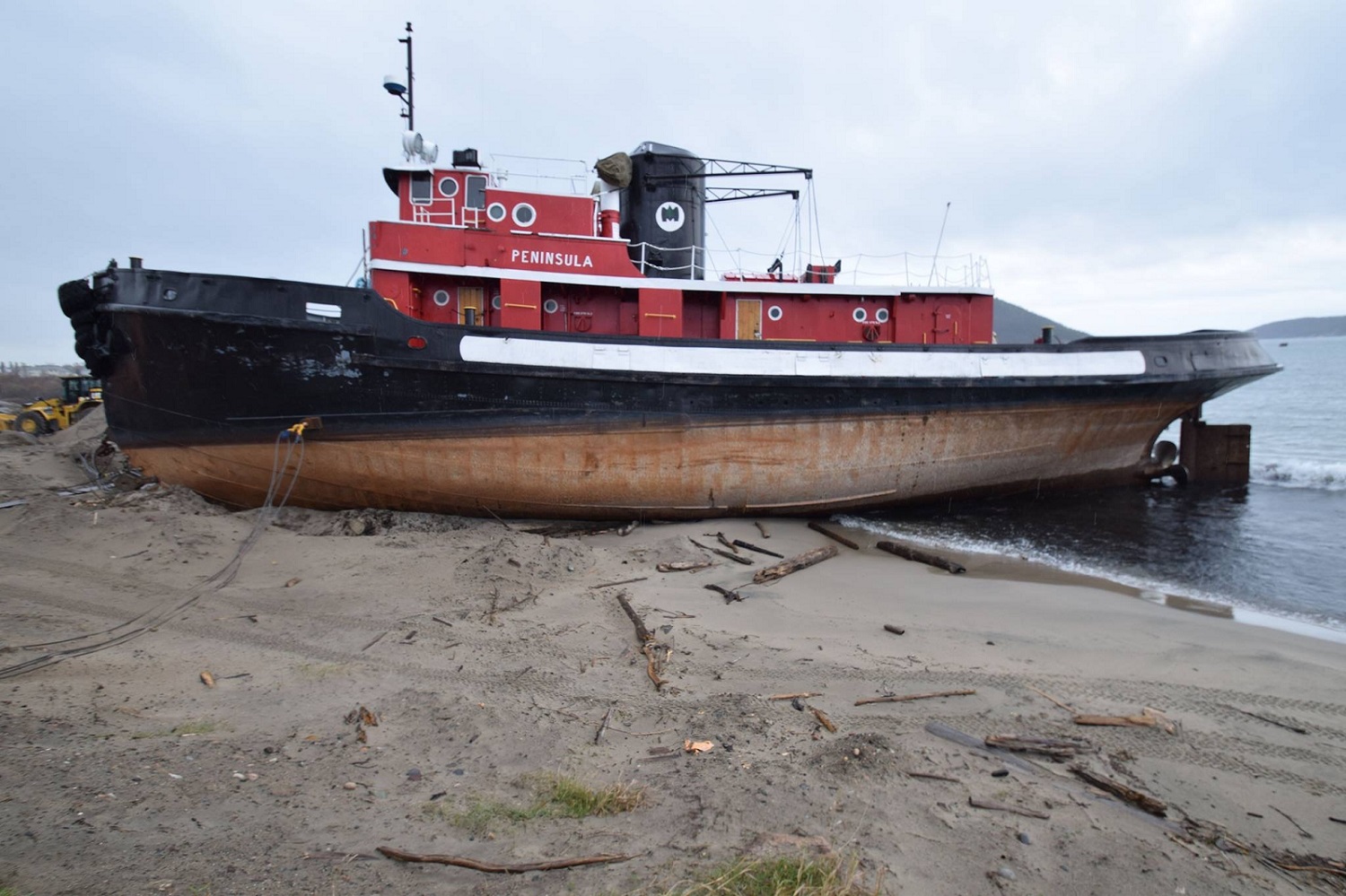
File No. 3-60
November 23, 2020
REPORT TO: Mayor Dumas & Council Members
SUBJECT: PENINSULA TUG DEMOLITION
Background: On August 27, 2020, an Order was issued by the Ontario Superior Court of Justice granting the Town of Marathon’s motion to contract a third-party of the Town’s choosing for the dismantling and removal of the Peninsula tugboat from the Town’s property. The Town met all conditions of the Order which included providing the Marathon & District Historical Society with: a number of non-permanent fixtures, the documentation of the tugboat via video and photos, and removal of a port hole, wooden doors, and two anchors. The Court Order is attached to this report for Council’s information.
Discussion: Administration is providing this report to Council to outline the facts and details of the tug demolition including the total cost, as well as the results of the Designated Substance Survey (DSS).
The Town contracted Priestly Demolition to undertake the tug demolition based on Priestly’s experience with these types of projects as well as their familiarity with Marathon. The original demolition contract price was $35,000. However, after the DSS was completed and the required abatement was priced out at $215,000, the total demolition and abatement cost escalated to $250,000. The majority of the costs were a result of the large number of man-hours required to remove the hefty amount of asbestos contained in the tugboat, by hand and not machine.
Prior to demolition, TBT Engineering was contracted to complete a DSS for the tugboat at a cost of $8,550. A DSS was required prior to demolition to identify potentially hazardous materials and substances that can have adverse human health effects such as, cancer causing and carcinogens, allergic reactions, liver and lung problems, and effects on the nervous system. An example of a material that is considered a designated substance is asbestos. Ultimately, a DSS would have been required if the tugboat was ever to be converted into any type of commercial or public operation which would have been the responsibility of the owner/constructor. The results of the tugboat DSS include:
- Asbestos was confirmed to be present within fibrous material in the mechanical room, within the plaster present on the pipes in the mechanical room, within the corded pipe wrap in the bunk room, within the vinyl floor tile, mastic present in the bunk rooms and hallway, within the insulation wrap around the steel beam in the lower hull area near the bow, in insulation, gaskets and pipe dope, in loose quantity in fibrous white sheet stock in miscellaneous storage areas throughout the vessel;
- Benzene was found to be present in large amounts of oil present on floors in the bunk rooms and the lower hull of the mechanical room;
- Lead at concentrations exceeding Federal regulations was confirmed in fourteen different samples throughout the tugboat;
- Mercury concentrations exceeding Federal regulations was present in six different paint samples throughout the vessel;
- Mercury was present in two thermostats;
- PCB’s were present within fluorescent light ballasts throughout the vessel as well as in various switchgear associated with the generator.
All of the observed designated substances were disposed of as per the guidelines and regulations in the Occupational Health and Safety Act.
Based on the findings of the DSS, it was unlikely the tugboat could have been converted into any public-serving operation without significant capital investment and refurbishment to abate the designated substances and meet the requirements to be a public entity. Not completing abatement work for designated substances and undertaking an open-to-the-public operation would have carried extreme liability with it.
In addition to the removal and disposal of designated substances, of particular note was that seven thousand (7,000) liters of flammable diesel liquid, ten thousand (10,000) liters of used oil, and fifty-thousand (50,000) liters of contaminated oil/water had to be pumped out of the tugboat, as it was contained within but had permeated throughout the entire vessel. In total this took seven days to complete by a certified contractor (GFL). Any cracking or holes in the tugboat’s outer hull, which was deteriorating, would have resulted in a major chemical spill. Given its beaching within Lake Superior, this would have been an environmental disaster with long-lasting harmful effects on marine, aquatic, wild, and plant life.
The tugboat posed a significant environmental and health and safety liability to the Town, Town property, and Lake Superior. It cannot be understated nor overlooked how much administrative and staff time was invested to manage this liability. The total hours would be well into hundreds of man-hours. With the demolition now complete, this liability has been eliminated completely.
Financial Implications: The total cost of demolition, abatement, and engineering was $258,550. Costs are broken down as follows:
- Designated Substance Survey - $8,550
- Designated substance abatement and disposal - $215,000
- Demolition - $35,000
In addition, the Town expended $15,000 in legal fees to undertake this matter.
Therefore, the total cost to bring this matter to completion was $273,550.
Options: None at this time. This project is now complete.
Recommendation: This report is presented for Council’s information.
Respectfully submitted,
Daryl Skworchinski
CAO/Clerk
Contact Us






 Subscribe to this Page
Subscribe to this Page